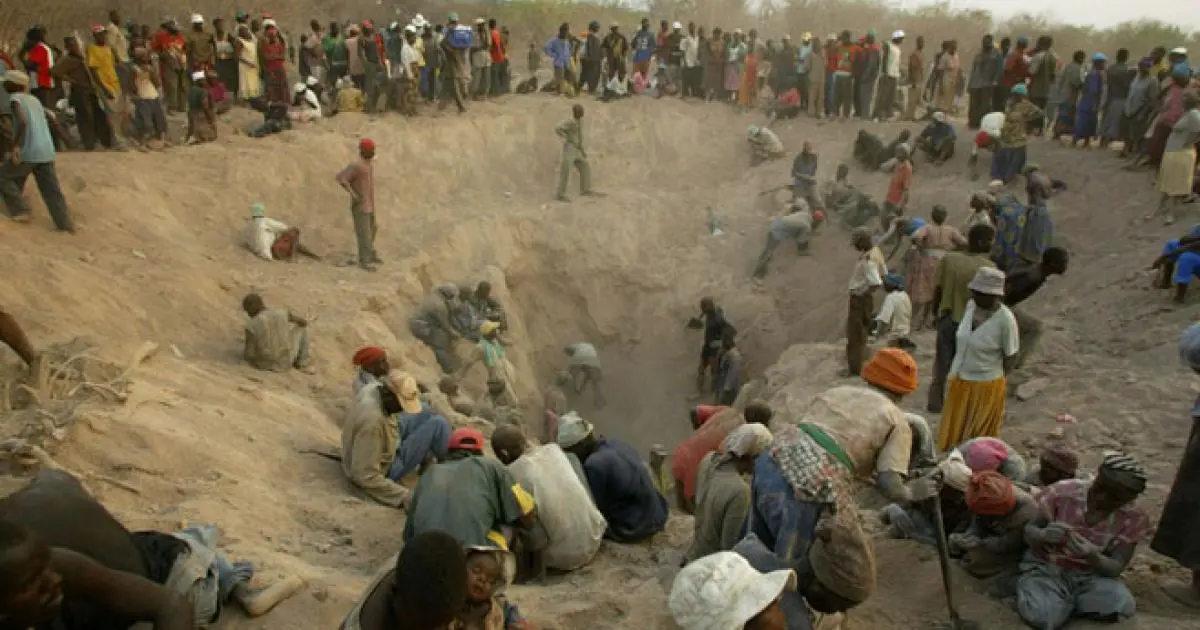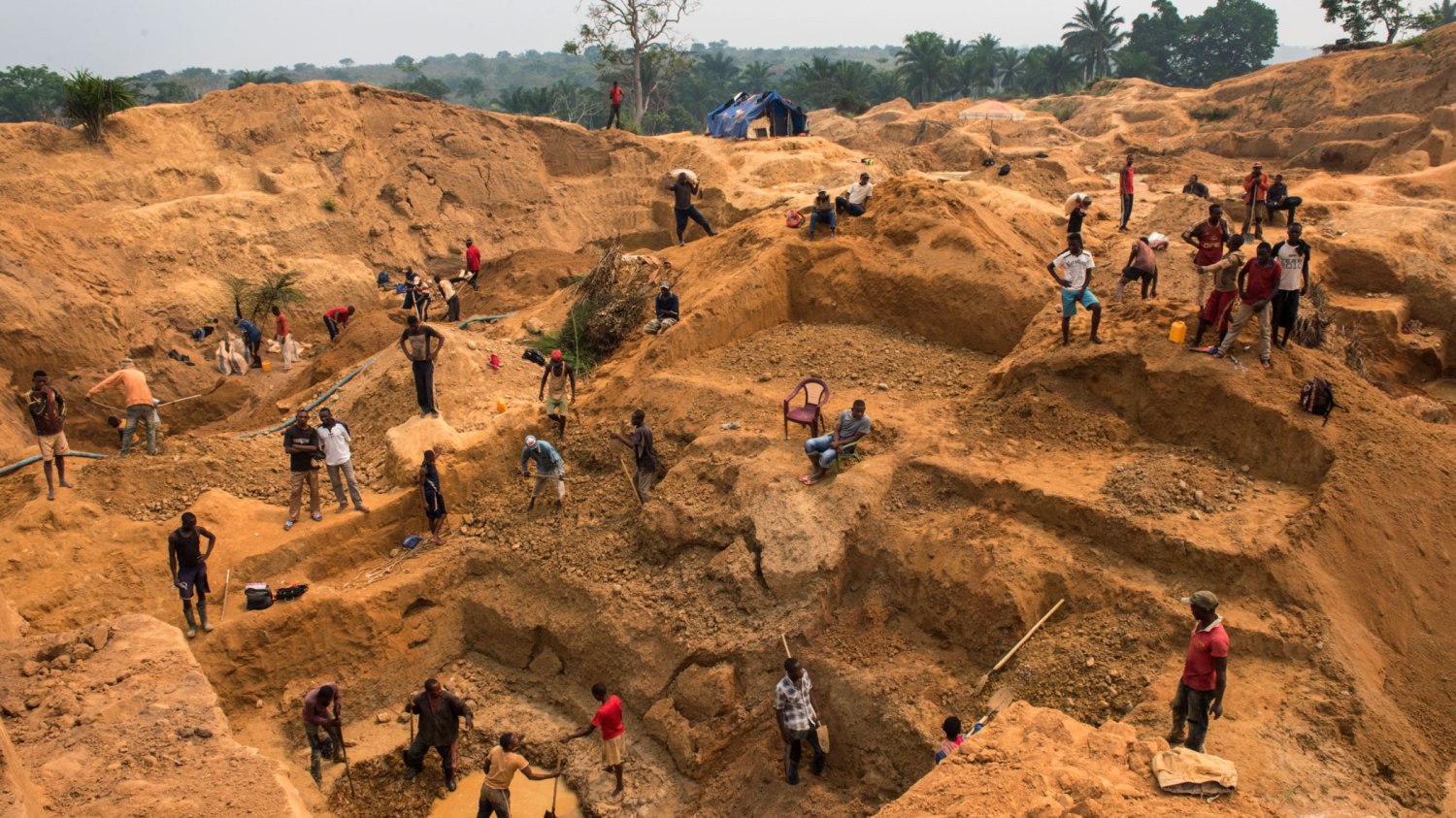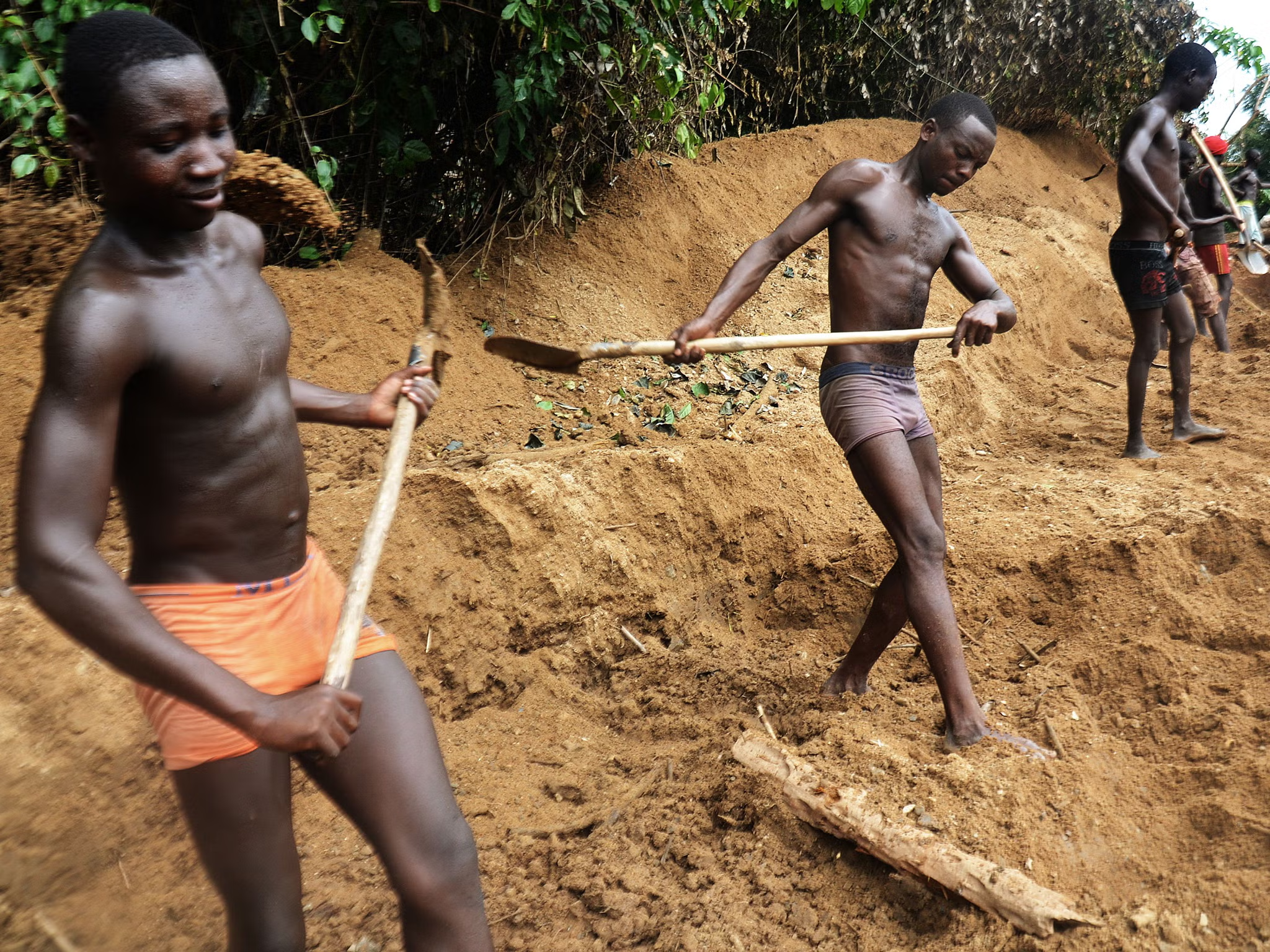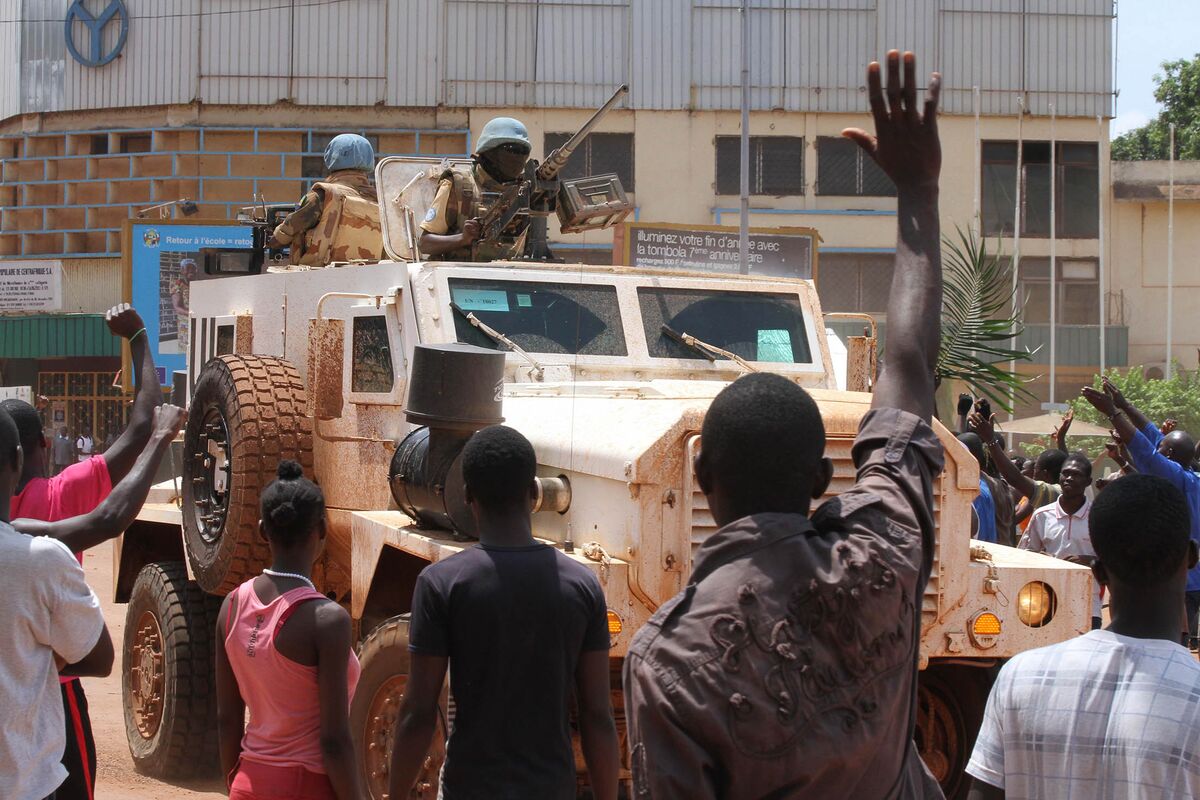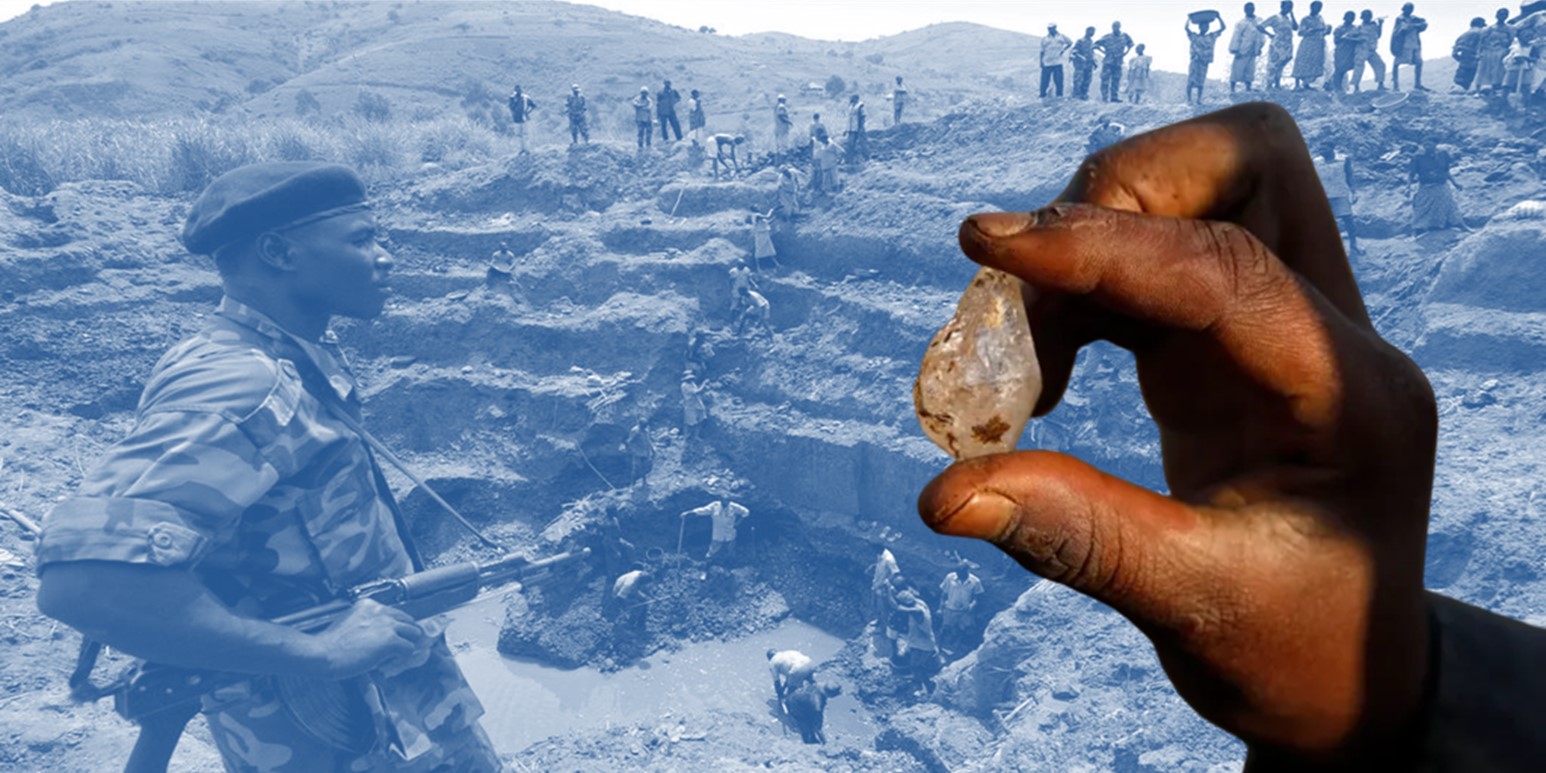
Diamonds, often referred to as "a girl's best friend," have long been synonymous with luxury, beauty, and enduring love. However, behind the sparkle lies a dark history, with diamonds becoming entangled in the web of civil wars, conflict, and human suffering. In this article, we delve into the intricate connection between civil wars and diamondtrade, exploring the devastating impact on communities and nations alike because diamonds and violence.
Blood Diamonds - Financing Conflict
Definition And Origin
Blood diamonds, or conflict diamonds, are a sinister facet of the diamond trade. These precious stones are mined in regions gripped by armed conflict, often characterized by political instability and violence. The term "blood diamond" encapsulates the grim reality that these gems finance and sustain armed conflicts against established governments. The origin of this trade lies in the exploitation of diamond-rich areas, transforming these valuable resources into instruments of destruction.
Historical Instances
The dark history of blood diamonds is punctuated by instances where these gems played a central role in fuelingand perpetuating devastating civil wars. One poignant example is the Sierra Leone Civil War(1991-2002). In this West African nation, rebel groups, notably the Revolutionary United Front (RUF), financed their operations by trading in diamonds. The illicit diamond trade became a crucial source of revenue, allowing these insurgent groups to procure weapons and fund their military campaigns.
Sierra Leone Civil War - A Diamond-Fueled Tragedy
During the Sierra Leone Civil War, rebel forces seized control of diamond mines, exploiting them to fund their insurgency. The diamonds extracted from these mines were smuggled and sold on the international market, contributing to a cycle of violence and brutality. The RUF, under the leadership of Foday Sankoh, used the proceeds from diamond sales to purchase arms, intensifying their campaign against the government.
The consequences were severe and far-reaching. Widespread atrocities, including mutilations, mass killings, and the recruitment of child soldiers, marked this dark chapter in Sierra Leone's history. The exploitation of diamonds not only fueled the conflict but also exacerbated the suffering of the civilian population.
Global Response - The Kimberley Process
The egregious human rights abuses and the link between diamonds and conflict in Sierra Leone and other nations prompted international action. In 2003, the Kimberley Process Certification Scheme was established to curb the trade in blood diamonds. This initiative aimed to create a transparent and traceable system for the diamond supply chain, ensuring that diamonds could not be used to finance armed conflict.
The Kimberley Process - A Double-Edged Sword
The Kimberley Process Certification Scheme, inaugurated in 2003, emerged as a beacon of hope in the fight against the trade of blood diamonds. Its inception marked a collective international effort to dismantle the nexus between diamonds and armed conflict. Initially celebrated for its noble intentions and early successes, the Kimberley Process aimed to establish a global framework ensuring that diamonds could no longer be used to fund violence and unrest.
Origins Of The Kimberley Process
The origins of the Kimberley Process can be traced back to the late 1990s when reports of blood diamonds financing brutal civil wars drew global attention. Recognizing the urgent need for action, governments, industry stakeholders, and advocacy groups convened to devise a solution. The result was the Kimberley Process, a certification system designed to track and authenticate the origin of rough diamonds, thereby preventing the infiltration of blood diamonds into the legitimate market.
Initial Successes
In its nascent stages, the Kimberley Process exhibited promising results. The scheme successfully garnered the participation of numerous diamond-producing and trading countries, fostering a collaborative environment committed to eliminating the trade of conflict diamonds. The visible reduction in the flow of blood diamonds to international markets was a testament to the initial efficacy of the Kimberley Process.
Limitations And Criticisms
However, the Kimberley Process, hailed as a panacea for the diamond industry's ethical concerns, soon revealed its limitations, exposing the double-edged nature of its impact.
Loopholes In The Certification Process
One significant criticism revolves around the existence of loopholes within the certification process. Critics argue that the system's focus on certifying only rough diamonds renders it susceptible to manipulation. Once diamondsare cut, polished, and transformed into jewelry, their origin becomes challenging to trace, allowing blood diamonds to enter the market undetected.
Lack Of Inclusivity
Another notable criticism is the perceived lack of inclusivity within the Kimberley Process. Some stakeholders argue that the scheme primarily addresses issues related to conflict diamonds, neglecting broader concerns such as human rights abuses, environmental degradation, and exploitation associated with diamond mining.
Effectiveness In Addressing Complexities
The Kimberley Process, while a commendable step towards mitigating the trade of blood diamonds, faces ongoing challenges in effectively addressing the intricate complexities of the diamond industry. The evolving nature of the market, coupled with the adaptability of illicit actors, necessitates continual reassessment and refinement of the Kimberley Process to ensure its relevance and effectiveness in curbing the flow of conflict diamonds.
Exploitation And Child Labor - The High Cost Of Precious Stones
Investigating The Impact
Diamond mining, often associated with luxury and glamour, carries a heavy human cost. A closer examination reveals the grim reality of exploitation and child labor within local communities. This investigation delves into the intricate dynamics that expose vulnerable populations to hazardous working conditions in the relentless pursuit of these coveted precious stones.
Hazards And Vulnerabilities
Within diamond mines, vulnerable populations, including adults and children, are often subjected to deplorable working conditions. The hazardous nature of the mining process, from extraction to processing, poses significant risks to the healthand well-being of these laborers. The allure of diamonds clashes starkly with the harsh reality faced by those toiling in the shadows.
The Cycle Of Exploitation
Explore the perpetuating cycle of exploitation within diamond mining communities. Poverty, lack of education, and limited opportunities force individuals into the mines, where they become ensnared in a web of exploitation. The allure of economic gain becomes a double-edged sword, trapping communities in a cycle that compromises the dignity and basic human rights of its members.
Displacement And Environmental Degradation - The Silent Victims Of Diamond Mining
Analyzing Social Consequences
Beyond the immediate impact on laborers, the social consequences of diamond mining extend to the displacement of entire communities. Investigate cases where families and entire villages are uprooted to make way for mining operations, highlighting the toll on the fabric of local societies.
Ecosystems Ravaged
Diamond mining is not only a human tragedy but also an environmental one. Analyze the far-reaching consequences of diamond mining on ecosystems, exploring instances where pristine landscapes are ravaged for the sake of profit. Unregulated mining practices contribute to deforestation, soil erosion, and water pollution, leaving ecosystems in a state of irreversible degradation.
Long-Term Implications
Discuss the long-term implications for regions caught in the crossfire of diamond-fueled conflicts. The environmental and social scars left behind extend far beyond the lifespan of a mine. Communities face challenges in rebuilding, ecosystems struggle to regenerate, and the very fabric of society is irrevocably altered.
Diplomacy And Regulation - A Global Effort Against Blood Diamonds
Exploring International Involvement
The fight against the links between diamonds and violence extends beyond national borders, involving international organizations, governments, and non-governmental organizations (NGOs). This exploration delves into the multifaceted role played by these global actors in addressing the complexities of the diamond trade.
International Organizations
Evaluate the contributions of international organizations such as the United Nations (UN) and the World Trade Organization (WTO) in crafting policies and frameworks aimed at eliminating blood diamonds. Analyze how these organizations collaborate to create a unified front against the illicit diamond trade and promote ethical practices within the industry.
Governments' Stance
Examine the diplomatic efforts of individual governments in response to the challenges posed by blood diamonds. Investigate how nations navigate the delicate balance between economic interests, geopolitical considerations, and the ethical imperative to eliminate the trade of conflict diamonds.
NGO Initiatives
Highlight the pivotal role played by non-governmental organizations (NGOs) in advocating for responsible diamond sourcing and ensuring transparency in the supply chain. Explore how NGOscollaborate with governments and industry stakeholders to monitor and address human rights abuses associated with diamond mining.
Challenges And Future Prospects - Navigating Complexities On A Global Scale
Enforcing Regulations
Examine the challenges faced by international actors in enforcing regulations within the diamond industry. Discuss the inherent difficulties in tracking and certifying diamonds from conflict-free sources, especially as the industry evolves and adapts to new market dynamics.
Compliance And Accountability
Assess the level of compliance within the diamond industry and explore strategies to enhance accountability. Discuss the complexities of ensuring that all actors within the supply chain adhere to ethical standards, considering the intricate nature of the global diamond trade.
Strengthening International Cooperation
Delve into potential future prospects for strengthening international cooperation in eliminating the illicit diamond trade. Explore avenues for enhanced collaboration, information sharing, and the development of more robust regulatory frameworks that can adapt to emerging challenges.
Technological Solutions
Investigate how technology, such as blockchain and other traceability mechanisms, can be leveraged to create a more transparent and accountable diamond supply chain. Explore how advancements in technology can aid in verifying the origin of diamonds and ensuring compliance with ethical standards.
Diamonds And Violence - FAQs
How Do Diamonds Cause Conflict?
Diamonds can cause conflict through a phenomenon known as "blood diamonds" or "conflict diamonds." The link between diamonds and conflict arises when rebel groups or insurgencies in diamond-rich regions exploit these valuable resources to finance their activities. In some cases, these groups take control of diamond mines, using the profits from diamond sales to fund armed conflicts against established governments. The revenue generated from the illicit diamond trade provides these groups with the financial means to purchase weapons, sustain their military operations, and perpetuate violence. The profits derived from blood diamonds often contribute to prolonged and brutal civil wars, leading to widespread human rights abuses and devastating consequences for affected communities.
What Is The Controversy About Diamonds?
The controversy surrounding diamonds primarily revolves around the ethical and humanitarian issues associated with their production and trade. Key points of controversy include:
- Blood Diamonds:The term "blood diamonds" refers to diamonds mined in war zones and sold to finance armed conflict. The controversy lies in the ethical concerns surrounding the use of these diamonds to fund violence, leading to human rights abuses and contributing to civil wars.
- Exploitation and Labor Practices:Diamond mining, particularly in certain regions, is linked to exploitative labor practices, including child labor and hazardous working conditions. This raises ethical questions about the treatment of workers involved in diamond extraction.
- Environmental Impact:The environmental consequences of diamond mining, such as deforestation, soil erosion, and pollution, contribute to the controversy. Unregulated mining practices can lead to long-term ecological damage, affecting biodiversity and local ecosystems.
- Opaque Supply Chains:The lack of transparency in the diamond supply chain has been a source of controversy. Consumers and advocacy groups have raised concerns about the difficulty in tracing the origin of diamonds and ensuring that they are ethically sourced.
What Are The Negative Effects Of Diamonds?
The negative effects of diamonds encompass a range of social, economic, and environmental consequences, including:
- Human Rights Abuses:Diamond mining in conflict zones is often associated with human rights abuses, including forced labor, child exploitation, and violence against workers and local communities.
- Civil Wars and Violence:The trade of blood diamondshas been a catalyst for prolonged and brutal civil wars, leading to widespread violence, displacement, and loss of life.
- Environmental Degradation:Unregulated diamond mining practices contribute to deforestation, soil erosion, and water pollution, causing long-term environmental damage and negatively impacting biodiversity.
- Exploitative Labor Practices:The allure of diamonds has led to exploitative labor practices, with workers facing hazardous conditions and inadequate wages in some diamond-producing regions.
- Economic Inequality:In some cases, the economic benefits of diamond mining may not trickle down to local communities, exacerbating economic inequality and disparities in wealth distribution.
- Opaque Supply Chains:The lack of transparency in the diamond supply chain raises concerns about the potential for unethical practices, making it challenging for consumers to ensure that the diamonds they purchase are ethically sourced and conflict-free.
Conclusion
As we navigate the intricate relationship between civil wars and the diamond trade, it becomes evident that diamonds, beyond their aesthetic allure, bear the weight of human suffering and conflict. The path forward lies in collective efforts to address the root causes, foster ethical practices, and promote a diamond industry that contributes to the prosperity and well-being of all involved. Only then can diamonds truly shine without casting a shadow of violence and exploitation.
